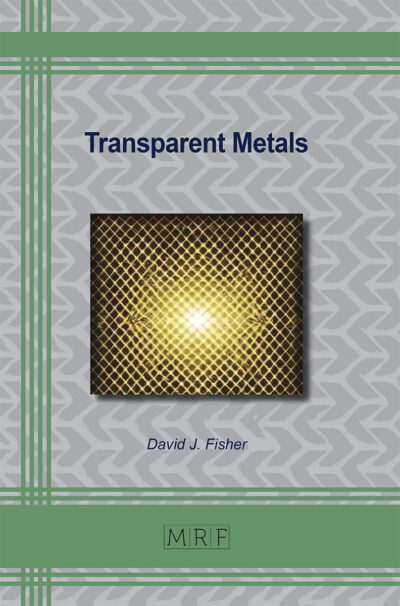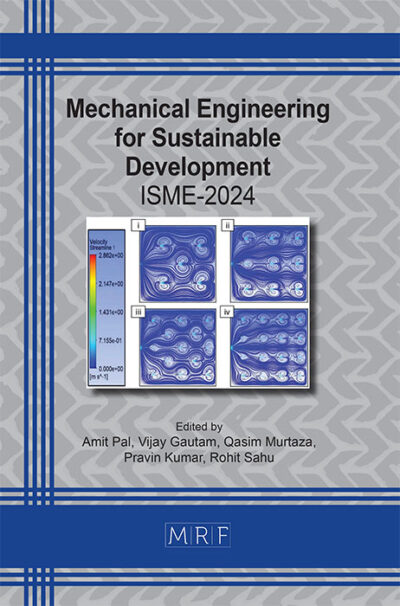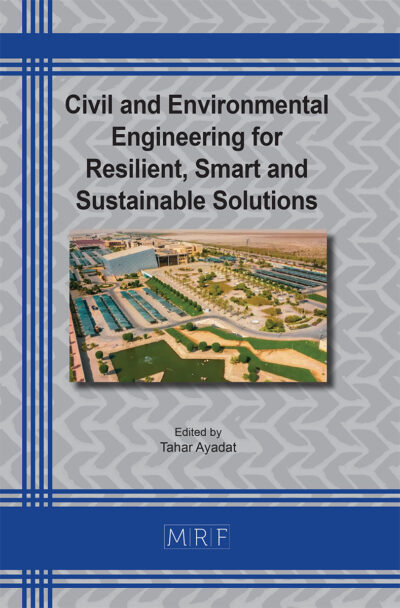A Comprehensive bibliometric review of circular economy in the building sector: Integrating sustainable practices
Zahwa MOUSTAFA, Muhammad ASIF, Ibrahim WUNI
Abstract. This study conducts a bibliometric literature review to analyze the sustainable performance of circular economy practices in the building sector, aiming to identify key research trends, influential publications, and collaborative networks. A systematic search was performed on the Scopus database, yielding 779 relevant articles. We used VOSviewer to conduct a bibliometric analysis focusing on co-authorship networks, citation patterns, keyword co-occurrence, co-citation, and bibliographic coupling. These analyses provided a detailed visualization of the research landscape. The analysis revealed significant clusters of research activity, highlighting key authors, influential journals, and widely cited works. The study identified prevalent themes and concepts, illustrating the development of circular economy practices in the building sector. Network visualizations showed strong collaborations and citation linkages among leading researchers and institutions. This bibliometric review offers a comprehensive overview of research trends in circular economy practices within the building sector. Uncovering patterns and key contributions provides valuable insights for researchers and practitioners focused on sustainability and resource efficiency in the built environment.
Keywords
Circular Economy, Building Sector, Sustainability, Environmental Impact, Economic Impact, Social Impact, Bibliometric Review
Published online 2/25/2025, 10 pages
Copyright © 2025 by the author(s)
Published under license by Materials Research Forum LLC., Millersville PA, USA
Citation: Zahwa MOUSTAFA, Muhammad ASIF, Ibrahim WUNI, A Comprehensive bibliometric review of circular economy in the building sector: Integrating sustainable practices, Materials Research Proceedings, Vol. 48, pp 1197-1206, 2025
DOI: https://doi.org/10.21741/9781644903414-128
The article was published as article 128 of the book Civil and Environmental Engineering for Resilient, Smart and Sustainable Solutions
![]() Content from this work may be used under the terms of the Creative Commons Attribution 3.0 license. Any further distribution of this work must maintain attribution to the author(s) and the title of the work, journal citation and DOI.
Content from this work may be used under the terms of the Creative Commons Attribution 3.0 license. Any further distribution of this work must maintain attribution to the author(s) and the title of the work, journal citation and DOI.
References
[1] Xiaodong Cao et al., “Building energy-consumption status worldwide and the state-of-the-art technologies for zero-energy buildings during the past decade,” Energy and Buildings, vol. 128, pp. 198–213, Sep. 2016. https://doi.org/10.1016/j.enbuild.2016.06.089
[2] Jinyan Zhan et al., “Life cycle energy consumption and greenhouse gas emissions of urban residential buildings in Guangzhou city,” Journal of Cleaner Production, vol. 194, pp. 318–326, Sep. 2018. https://doi.org/10.1016/j.jclepro.2018.05.124
[3] Cyrine Mrad, Cyrine Mrad, L. F. Ribeiro, and Luís Frölén Ribeiro, “A Review of Europe’s Circular Economy in the Building Sector,” Sustainability, vol. 14, no. 21, pp. 14211–14211, Oct. 2022. https://doi.org/10.3390/su142114211
[4] Oluyomi A. Osobajo et al., “A systematic review of circular economy research in the construction industry,” Aug. 2020. https://doi.org/10.1108/sasbe-04-2020-0034
[5] Jouni Korhonen et al., “Circular Economy: The Concept and its Limitations,” Ecological Economics, vol. 143, no. 143, pp. 37–46, Jan. 2018. https://doi.org/10.1016/j.ecolecon.2017.06.041
[6] Daniel Luiz de Mattos Nascimento et al., “Exploring Industry 4.0 technologies to enable circular economy practices in a manufacturing context: A business model proposal,” Journal of Manufacturing Technology Management, vol. 30, no. 3, pp. 607–627, Apr. 2019. https://doi.org/10.1108/jmtm-03-2018-0071
[7] Alejandro Padilla‐Rivera et al., “Addressing the Social Aspects of a Circular Economy: A Systematic Literature Review,” Sustainability, vol. 12, no. 19, p. 7912, 2020. https://doi.org/10.20944/preprints202009.0044.v1
[8] Magnus Sparrevik et al., “Circular economy in the construction sector: advancing environmental performance through systemic and holistic thinking,” Environment Systems and Decisions, vol. 41, no. 3, pp. 1–9, 2021. https://doi.org/10.1007/s10669-021-09803-5
[9] Janaine Fernanda Gaelzer Timm, Vinícius Gonçalves Maciel, and Ana Passuello, “Towards Sustainable Construction: A Systematic Review of Circular Economy Strategies and Ecodesign in the Built Environment,” Buildings, vol. 13, no. 8, pp. 2059–2059, Aug. 2023. https://doi.org/10.3390/buildings13082059
[10] Mingyu Yang et al., “Circular economy strategies for combating climate change and other environmental issues,” Environmental Chemistry Letters, Sep. 2022. https://doi.org/10.1007/s10311-022-01499-6
[11] Masoud Norouzi et al., “Circular economy in the building and construction sector: A scientific evolution analysis,” Journal of building engineering, vol. 44, p. 102704, May 2021. https://doi.org/10.1016/j.jobe.2021.102704
[12] Lokman I. Meho, Lokman I. Meho, Yvonne Rogers, and Yvonne Rogers, “Citation counting, citation ranking, andh-index of human-computer interaction researchers: A comparison of Scopus and Web of Science,” Journal of the Association for Information Science and Technology. https://doi.org/10.1002/asi.20874
[13] I. Y. Wuni and Ibrahim Yahaya Wuni, “A systematic review of the critical success factors for implementing circular economy in construction projects,” Sustainable Development, Nov. 2022. https://doi.org/10.1002/sd.2449
[14] Nees Jan van Eck, N. J. van Eck, Ludo Waltman, and L. Waltman, “Software survey: VOSviewer, a computer program for bibliometric mapping.,” Scientometrics, vol. 84, no. 2, pp. 523–538, Jan. 2010. https://doi.org/10.1007/s11192-009-0146-3
[15] Nees Jan van Eck, N. J. van Eck, Ludo Waltman, and L. Waltman, “Visualizing Bibliometric Networks,” pp. 285–320, Jan. 2014. https://doi.org/10.1007/978-3-319-10377-8_13
[16] Safowaa Osei-Tutu, J. Ayarkwa, Gabriel Nani, D. Osei-Asibey, and Ivy Maame Adwoa Abu, “Stakeholders’ role towards circular economy implementation: a scientometric review,” Construction Innovation, 2024. https://doi.org/10.1108/ci-02-2023-0032
[17] Ibrahim Yahaya Wuni, I. Y. Wuni, Geoffrey Qiping Shen, G. Q. Shen, Robert Osei–Kyei, and R. Osei-Kyei, “Scientometric review of global research trends on green buildings in construction journals from 1992 to 2018,” Energy and Buildings, vol. 190, pp. 69–85, May 2019. https://doi.org/10.1016/j.enbuild.2019.02.010
[18] Weisheng Lu et al., “Analysis of the construction waste management performance in Hong Kong: the public and private sectors compared using big data,” Journal of Cleaner Production, vol. 112, pp. 521–531, Jan. 2016. https://doi.org/10.1016/j.jclepro.2015.06.106
[19] Huanyu Wu et al., “A review of performance assessment methods for construction and demolition waste management,” Resources Conservation and Recycling, vol. 150, p. 104407, Nov. 2019. https://doi.org/10.1016/j.resconrec.2019.104407
[20] Zhikang Bao, Zhikang Bao, Weisheng Lu, and Weisheng Lu, “Applicability of the environmental Kuznets curve to construction waste management: A panel analysis of 27 European economies,” Resources Conservation and Recycling, vol. 188, pp. 106667–106667, Jan. 2023. https://doi.org/10.1016/j.resconrec.2022.106667
[21] Sultan Çetin, “Towards a circular building industry through digitalisation,” Architecture and the Built Environment, 2023. https://doi.org/10.59490/abe.2023.22.7284
[22] Xiaozhi Ma, Hongping Yuan, and Wenbo Du, “Blockchain-Enabled Construction and Demolition Waste Management: Advancing Information Management for Enhanced Sustainability and Efficiency,” Sustainability, 2024. https://doi.org/10.3390/su16020721
[23] Nilupa Udawatta et al., “Attitudinal and behavioural approaches to improving waste management on construction projects in Australia: benefits and limitations,” The international journal of construction management, vol. 15, no. 2, pp. 137–147, Apr. 2015. https://doi.org/10.1080/15623599.2015.1033815












